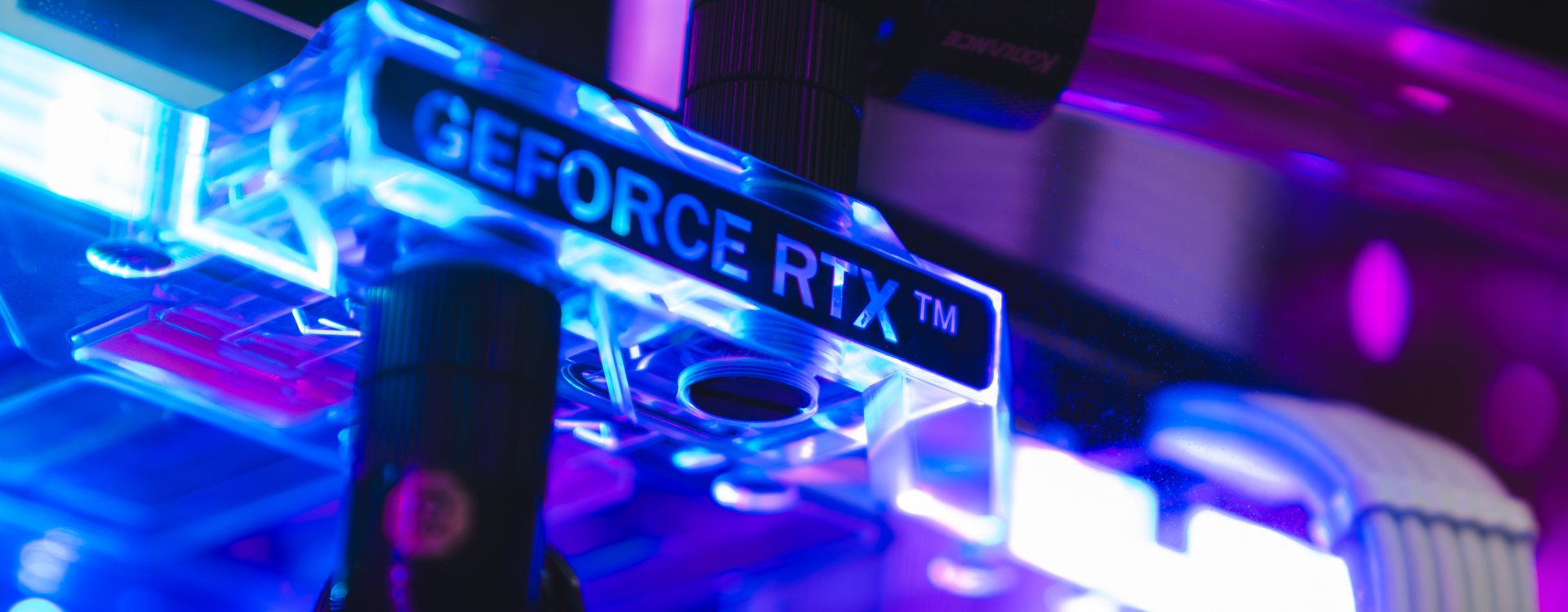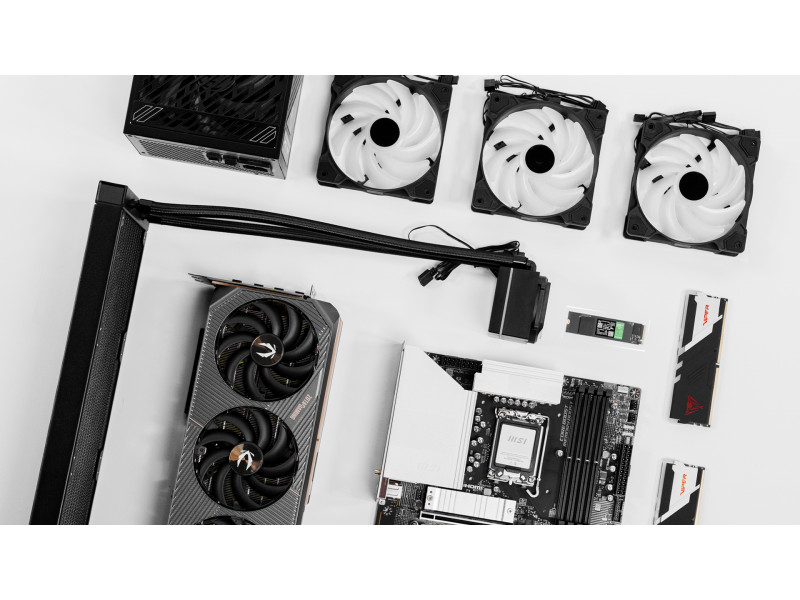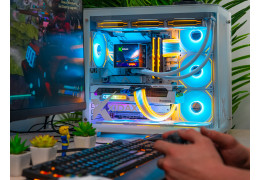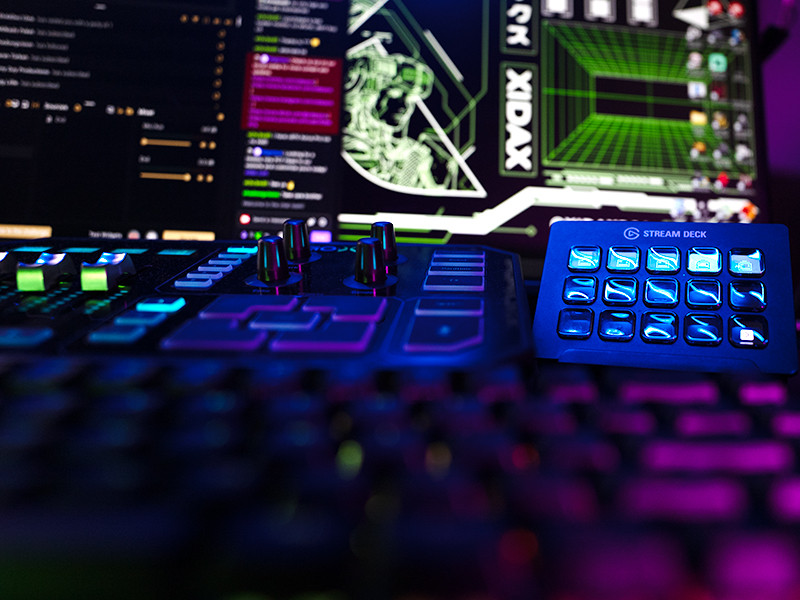
TL;DR – When Should You Upgrade Your GPU?
If your games are stuttering, you’re stuck on low settings, or your GPU is constantly maxed out at 99%, it might be time for an upgrade. Other signs include unsupported drivers, missing out on modern tech like ray tracing or DLSS 4, or getting a new high-res monitor your card can’t keep up with. But don’t rush into buying the most expensive card— Xidax recommends matching your GPU to your monitor, your games, and your FPS goals. Also check your power supply, PC case space, and CPU to avoid bottlenecks. Use our handy GPU tier guide to find a good match by resolution and budget. Feeling overwhelmed? Xidax offers free, no-pressure consultations and pro upgrades. For the best guidance and assistance in upgrading anything for gaming PCs, talk to our gaming pc experts. Need more? Read on.
Your gaming PC been working well, but lately things feel a bit off. Your games are stuttering and you're constantly turning down your graphics settings just to stay playable, or maybe your friends are raving about stunning new lighting effects, but your PC just can't handle it. Sound familiar?
Knowing when to upgrade your GPU is key to staying in the game without blowing your budget. Let’s break it down simply.
Signs to Know if it's Time to Upgrade GPU
Think of your GPU like the engine in a car. Eventually, even a good engine struggles with new demands. Here are indications that your GPU might be signaling it is time to upgrade:
Stuttering
Games start glitching, lags, freezing, or feeling generally "choppy," especially during intense scenes or in visually complex new games. This happens when your GPU just can’t draw faster frame rates, even at high resolution.
Settings Sacrifices
Remember when you could max out every slider? Now, you find yourself constantly lowering textures, shadows, effects, or even resolution just to hit a barely acceptable 50-60 FPS (Frames Per Second). If "Low" or "Medium" is your new normal to keep things smooth, your graphics card is showing its age.
99% GPU Grind
Open your Task Manager (Ctrl+Shift+Esc) or (Command+Option+Esc) while gaming and look at the Performance tab. If your GPU usage is constantly pinned at 95-100% while your CPU usage is significantly lower (say, 50-70%), that’s a classic graphics card bottleneck - it's working flat-out and can’t keep up, holding back the rest of your system.
Driver Dead End
Check the manufacturer’s website (Nvidia, AMD, Intel). Are the newest game-ready drivers no longer supporting your graphics card model? Once official driver support stops, new games might not run optimally (or at all), and you won’t get crucial bug fixes or performance tweaks.
Missing the Modern Magic
New technologies significantly enhance visuals and performance. You’re missing out on a big part of today’s (and tomorrow’s) gaming experience if your card can't handle these:
-
- Ray Tracing: Realistic lighting, shadows, and reflections that make games look incredibly lifelike.
- DLSS 4 / FSR 4: AI-powered upscaling that boosts frame rates dramatically while maintaining (or even improving) image quality.
- Higher Resolutions/Refresh Rates: You got a new 1440p 144Hz or 4K monitor, but your graphics can't push enough pixels to do it justice.
Okay, I Need to Upgrade! What GPU Should I Choose? (First Steps)
Before you rush out and buy the biggest, baddest (and most expensive) new graphics card you see, take a breath! Choosing wisely is important.
Know Your Gaming Goals (Be Honest!)
This is the MOST important step for gaming performance. Your monitor dictates the workload. Buying a super-powerful 4K GPU for a 1080p 60Hz monitor is overkill and wastes money. Conversely, a budget card will struggle badly on a 4K display.
- What Resolution & Refresh Rate is your monitor? Check its specs: 1080p? 1440p? 4K? 60Hz? 144Hz? 240Hz?
- What Games Do You Play? Demanding AAA blockbusters (like Cyberpunk 2077, Alan Wake 2)? Competitive esports (Valorant, CS2, Apex Legends)? Older titles or indie games?
- What Settings & FPS Do You Want? Are you happy with "High" settings at 60 FPS, or do you crave "Ultra" at 100+ FPS for super smoothness?
Check the Gatekeepers: Compatibility & Power
It's time to upgrade your graphics if these pieces of hardware need to stress their settings trying to compensate for your gpu needs.
-
- Power Supply (PSU): Newer, more powerful graphics need more juice! Find your PSU’s wattage (it’s on the label inside your PC). Research the recommended PSU for any GPU you consider. Make sure you have a PSU that can accommodate advance graphics, if not... You’ll need to upgrade this too. A weak PSU can cause crashes or even damage components.
- Physical Space: High-end Graphics Cards are long and chunky. Grab a tape measure! How much space is available in your PC case lengthwise (from the back slot to the front drive bays/cage)? Compare this to the length of the GPU you want. Also, check width – will it bump into side panels or cables?
- CPU Balance: Is your processor (CPU - Central Processing Unit) old? A powerful new GPU might be held back ("bottlenecked") by a slow CPU, especially at lower resolutions. Use that Task Manager trick – if your GPU isn’t hitting 99% but your CPU is, you might need a CPU upgrade first or alongside the GPU. These things should be compatible before buying new hardware.
- Set Your Budget: GPUs range from around $250 to well over $2000. Don't stress out about pricing—but there are some things to consider like the need of it together with your comfortable spending. Be realistic as possible, go for the budget you can afford. Prices can fluctuate wildly, so keep an eye out.
Check our other guides on upgrades that focus on improving gaming performance.
GPU Cheat Sheet (Matching Goals to Graphics)
Based on your goals from Step 1, here’s a general guide to dedicated Graphics Card tiers in mid-2025 (Remember: Check current prices and reviews):
Table 1: GPU Recommendations by Gaming Goal (Mid-2025)
| Your Gaming Target | Excellent GPU Choices (Estimates) | What to Expect |
|---|---|---|
| 1080p / 60-75 FPS | Intel Arc B580 (~$250), Nvidia RTX 4060 (~$340), AMD RX 9060 XT 8GB (~$350) | Smooth gameplay on High/Ultra settings in most modern titles. Great value entry point. |
| 1080p / High Refresh (144+ FPS) | AMD RX 9060 XT 16GB (~$370), Nvidia RTX 5060 (~$300 MSRP) | Max settings, super-smooth competitive play. The 16GB VRAM adds longevity. |
| 1440p / 60-100 FPS | AMD RX 9070 (~$670), Nvidia RTX 5070 (~$650) | Strong High/Ultra performance. Handles ray tracing decently with upscaling help. |
| 1440p / High Refresh (100+ FPS) | AMD RX 9070 XT (~$760), Nvidia RTX 5070 Ti (~$750) | Excellent for maxed-out 1440p, high frame rates, good ray tracing (especially Nvidia). |
| 4K / 60 FPS | AMD RX 9070 XT (~$760), Nvidia RTX 5080 (~$1000) | Solid 4K performance, often needing settings tweaks or upscaling (FSR 4/DLSS 4) for best results. |
| 4K / High Refresh / Max Everything | Nvidia RTX 5090 (~$2000), AMD RX 7900 XTX (~$1100) | The ultimate power. Handles 4K Ultra with high FPS and demanding ray tracing. Pricey! |
Key Considerations:
VRAM Matters
For higher resolutions (1440p, 4K) and future-proofing, aim for at least 12GB, with 16GB+ being ideal for max settings and new games. Cards like the RX 9060 XT 16GB and RX 9070 offer great VRAM value.
Rendering & Upscaling
Nvidia (DLSS 4) generally leads in path tracing performance and AI upscaling quality/ease-of-use. AMD (FSR 4) has made big strides, works on more cards (including Nvidia), and offers excellent value, especially in pure rasterization (non-RT) performance. Consider how important cutting-edge visuals are to you.
New vs. Used GPUs
Used GPUs (like older RTX 30-series) can be great deals, but:
- Buy Reputable: Use trusted marketplaces or sellers with good feedback.
- Test Thoroughly: If possible, test the card for overheating (monitor temps under load) and visual glitches ("artifacting"). Ask about warranty remaining.
- New Offers Peace of Mind: A new card comes with a full warranty and no worries about previous wear-and-tear.
- Timing: GPU prices fluctuate. New releases (like the rumored RTX 5050) or major sales events (Black Friday) can offer savings. However, don't wait forever if your current experience is poor!
Feeling Overwhelmed? Get Expert Help Selecting a New GPU (The Easy Way)
Choosing and installing a GPU isn't always plug-and-play. Compatibility checks, physical fit, power requirements, potential bottlenecks, driver updates – it can feel like a lot, especially if you're not tech-obsessed. That’s totally okay!
This is where Xidax shines. We’re not just another PC seller; we’re fellow gamers and hardware experts dedicated to your best gaming experience.
Free, No-Pressure Consultations
Unsure if you even need an upgrade? Not sure which GPU fits your goals and your current PC? Chat with our US-based experts for free! Use the chat feature on Xidax.com or give us a call. We’ll ask about your PC, your monitor, your games, and your budget, then give you straightforward, honest advice – no hard sell, just helpful guidance.
Stress-Free Upgrades
If you decide a new GPU is the answer, we can handle the entire process. We’ll ensure the perfect card is chosen that works flawlessly with your system (or tell you if you need other upgrades like a PSU first). We professionally install it, rigorously test it, and update all drivers – you just plug it in and game.
Lifetime Warranty & Support
Every Xidax system and upgrade comes with our legendary Lifetime Warranty and free tech support. Got a question two years from now? We’ve got your back.
Bottleneck Avoidance
Our experts specialize in building balanced systems. We’ll make sure your new GPU isn’t held back by your CPU or other components, maximizing your investment.
Consider Before Upgrading Your Graphics Card
Check the overall performance and configuration of your computer. It's often better to check other parts of your system hardware before you decide to upgrade to a new gpu plus your other hardware.
Knowing when to upgrade your GPU boils down to listening to your PC (the stutters, the low FPS, the maxed-out usage) and being honest about your gaming desires (resolution, eye candy, smoothness). Choosing the right GPU for your gaming PC means matching it to your monitor, your games, and your budget, while carefully checking power and space.
Don't upgrade just because a shiny new card exists. Upgrade when it solves a real problem or unlocks a real goal for you – like finally playing that demanding game smoothly, experiencing breathtaking ray tracing, or maxing out your high-refresh monitor. Make your rig work for you.
If the process feels daunting, remember you don’t have to go it alone. The Xidax team is here to help you figure it all out, completely free of charge. Whether you just need advice or want a seamless, worry-free upgrade handled by professionals, we’ve got the expertise and the customer-first attitude to make your GPU upgrade simple and successful.
Ready to ditch the stutter and experience your games like never before? Chat with a friendly Xidax expert today and see how easy your GPU upgrade can be.


